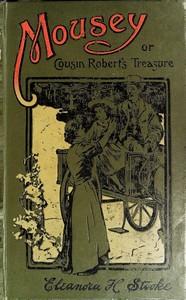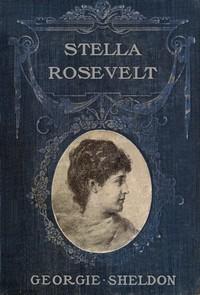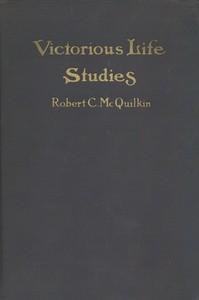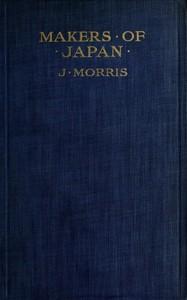Read this ebook for free! No credit card needed, absolutely nothing to pay.
Words: 62084 in 12 pages
This is an ebook sharing website. You can read the uploaded ebooks for free here. No credit cards needed, nothing to pay. If you want to own a digital copy of the ebook, or want to read offline with your favorite ebook-reader, then you can choose to buy and download the ebook.
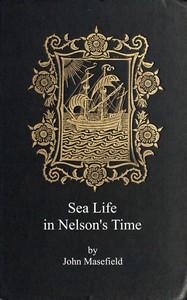

: Sea life in Nelson's time by Masefield John - Great Britain. Royal Navy Sea life; Great Britain. Royal Navy History Napoleonic Wars 1800-1815; Napoleonic Wars 1800-1815 Naval operations British
izzen-mast was distant from the bow about seventeen-twentieths of the length of the lower gun-deck. The heels of all three masts were stepped or fixed in strong wooden sockets, or mortises, known as tenons, at the bottom of the ship's hold. These mortises or tenons were of oak, and the timbers which formed them lay across the keelson, or inner part of the keel. The bowsprit "steeved" or raked upwards at an angle of about thirty-six degrees with the horizon. The masts, as a rule, raked or inclined slightly aft, but the rake of a ship's mast was sometimes altered to suit her sailing. Some ships sailed better with their masts stayed forward, or stayed plumb, without rake.
When the lower masts and bowsprit were stepped and secured the ship received her rigging from the rigging-loft. Her lower rigging was then set up by master-riggers, helped by the marines and standing officers. The shrouds and stays which secured the masts were made of hempen rope, "three-strand shroud laid," tarred on the outside, but not within the lay of the rope. Wire rope, which is now used for nearly all standing rigging, was then unknown. When the lower rigging was all set up, and the rigging of the bowsprit finished, the jibboom and top-masts were sent aloft and rigged. When these were finished the flying jibboom and topgallant and royal masts were sent up and rigged, after which the ship's standing rigging was complete. The stays, the strong ropes which supported the masts forward, were always doubled.
When the standing rigging was complete, the yards, on which the square-sails set, were crossed on their respective masts. The yards were of fir, the lower yards being "made," or built, of more than one piece of timber. The upper yards were fashioned from single trees. Some captains of Nelson's time slung their lower yards with chain, a custom which in time became general. As a rule, however, the lower yards were slung with stout rope. The rig was practically that in use at the time of the abolition of sailing ships in the Royal Navy in the early sixties. There were, however, various differences. The sprit-sail, a square-sail on the bowsprit, setting from a yard underneath that spar, was still in use. The sail was not abolished until about 1810, while the yard, or a relic of it, remained for many years later, though no sail was set upon it. On the mizzen-mast the spanker or driver was not set upon a gaff and boom, but on a great lateen yard, pointing fore and aft, its lower and forward arm reaching down to a little above the wheel. Ships with these lateen "cross-jacks" were to be seen almost at the end of the eighteenth century. No ships carried sails above their royals, the fourth square-sail from the deck. Stay-sails were set between the masts, and studding-sails at the extremities of the yards. Perhaps the last change in rigging which Nelson saw was the introduction of the flying jib, and its boom, at the extremity of the bowsprit.
Masts, spars, sails, and rigging for ships of every rate were always kept in stock at the royal yards. The ships of the navy were built according to the "Establishment," or Admiralty regulations, each ship of each rate being as like as possible, so that the gear of one 74 would fit every 74 in the service. The theory was excellent, but in practice it failed, because many of the ships in our navy in Nelson's time were not built according to the "Establishment" but were captured from the French and Spanish. Indeed, the only good ships in our fleets were built by French and Spanish hands. The French treated shipbuilding as an imaginative art. The very finest brains in the kingdom were exercised in the planning and creation of ships of beautiful model. Admirable workmen, and the best talents of France, produced, in the latter half of the eighteenth century, a number of sailing men-of-war which were more beautifully proportioned, faster on every point of sailing, stronger, and with larger batteries, than the ships built in this country at that time. A French 80-gun ship at the close of the eighteenth century was bigger, more roomy, faster, and a finer ship in every way, than our 98-gun ships. Our own men-of-war were so badly designed and proportioned that they were said to have been built by the mile, and cut off as required. They were very cramped between-decks, yet they were nearly always pierced for more guns than they could conveniently fight. They were very crank ships, and so "weak" that they could not fight their lower-deck guns in anything like weather. They were slow at all points of sailing, and slack in stays. In heavy weather they sometimes rolled their masts out, or sprung them by violent pitching. Had the French been able to improve their guns as they improved their ships our navy would have been destroyed. As it was, their superior sailing was to some extent neutralised by the fact that decisive naval engagements had to be fought at close range, within, say, a quarter of a mile of the enemy. The Spanish ships were but a little inferior to the French. A queer Irish genius named Mullins, who had settled in Spain, was the master-shipwright responsible for them. They were used as models by our English designers, but the English ships were not markedly improved till after the death of Nelson. The following table may help the readers to an understanding of the different rates in use. The figures are approximate.
Viewed from without, a first, second, or third-rate wooden man-of-war appeared ponderous and cumbersome. A modern sailor, accustomed to the keen iron-ships of the present day, would have called such a ship a sea-waggon, qualified or otherwise, before spitting and passing by. But when the great sails were set, and the hull began to move through the sea, the cumbrous hulk took on attributes of beauty and nobility. There has been, perhaps, no such beautiful thing on earth, the work of man's hands, as an old 74 under sail.
If one had taken a boat and rowed out to such a ship as she lay at anchor, fitted for the sea, towards the end of the eighteenth century, one would have been struck, first of all, by her bulk. The ships had bulging wooden sides, vast stern-works, and cumbrous wooden beakheads. They set one wondering how oak of such thickness could have been wrought to such curves. Till Nelson's time there was no uniformity in the painting of the exteriors of the ships. The captains used their own discretion, and followed their own tastes, in the selection and application of the colours. The most general colour-scheme was as follows:--Along the water-line, just above the ruddy gleam of the copper-sheathing, was a wide black streak, running right round the ship, and reaching as high as the level of the lower gun-deck. Above this the sides were yellow, of a yellow sometimes inclining to brown, like the colour of certain varnishes, and sometimes of a brighter tint, like the colour of lemon peel. The after upper-works above the gun-decks, and the outer sides of the poops above the quarter-deck guns, were painted a vivid red or blue. This band of bright colour gradually faded, till by the time of Trafalgar it had become a very deep and dull blue, of a dingy tint that was very nearly black. A band of scarlet or pale blue, edged with gold, ran round the forecastle, and continued down the beak to the figurehead. The outsides of the port-lids were of the same colour as the sides--that is, of a brownish yellow. The stern-works were generally elaborate with gilded carving, gilt cherubs, and the like, and with red, blue, green and gold devices, such as cornucopias, drums and banners, royal arms, wreaths, etc. Round the stern of each ship, outside the glazed cabin windows , ran a quarter gallery or stern walk, on which the captain could take his pleasure. The supports and rails of this walk were heavy with gold-leaf. First and second-rate ships had three and two stern walks respectively. At the bows, at the extremity of the great beakhead, was the ship's figurehead, either a ramping red lion or a plain white bust, or a shield, or some allegorical figure suggested by the name of the ship. The allegorical figure was, perhaps, the most popular among the sailors. They took great pride in keeping it in good repair, with bright gilt on its spear or helmet, red paint upon its cheeks, and pretty blue sashes wherever such appeared necessary.
The ships of Lord Howe's fleet, in 1794, appear to have been painted as follows:--The side of the ships above the line of the copper a dull brown tint; the tiers of ports a pale lemon yellow, chequered by the port-lids, the outsides of which were brown, like the sides of the ship. The gilded scroll-work, at bow and stern, was as usual. Lord Nelson is said to have painted the ships of his fleets after much the same pattern, only substituting black for the dull brown of the sides and outer port-lids. The arrangement used by him became popular. It was known as the "Nelson chequer": black sides and port-lids, and yellow streaks to mark each deck of guns. It was at first used only by those ships which had fought at Trafalgar or the Nile. In time it became the system adopted throughout the Navy. The captains of some ships preferred their own colour-schemes, and painted their vessels with red or orange streaks to mark the gun tiers. The "Nelson chequer" was, however, to become the colour arrangement generally employed. Some years after Trafalgar the lemon-yellow ribands gave place to white, which continued in use till wooden men-of-war became obsolete. Those which remain afloat are painted black and white in the manner in use in the early sixties, when such ships ceased to be built.
Internally, the sides of the ships were painted blood-red, in order that the blood, which so often and so liberally spattered them, might not appear. The inner sides of the port-lids were painted of this colour, so that when the port-lids were opened, the brown or black of the ship's sides was diversified agreeably with scarlet squares. After Trafalgar the interiors of the ships of war were sometimes painted in other colours, according to the whims of their commanders. Green was the most common variant, but the interior of some ships was painted yellow or brown. A favourite arrangement was the white and green--white for the ship's sides and beams, and green for the waterways and coamings. White became the rule about the year 1840. Many internal fittings, such as gun-carriages, and, in some cases, the guns themselves, were painted red or chocolate. Lower masts were sometimes painted a dull brownish yellow. Top-masts and upper spars were covered with a dark brown preserving varnish. Yards and gaffs were painted black. Blocks, chains, dead-eyes, and wooden and iron fittings for the rigging, were tarred black to match the yards. The projecting platforms known as the chains or channels at the side of the ships, to which the lower rigging was secured, were painted to match the sides of the ships. As the masts of French ships were generally painted black, the ships in our fleets painted their masts white before any general engagement, so that the ships might be distinguished in the smoke and confusion.
The visitor going aboard one of these ships, and entering her, not by the entry port to the main-deck, with its little brass rail and carved porch, but by the gangway to the upper-deck, would have climbed from his boat by a ladder of battens nailed to the timbers. At each side of this ladder was a side rope, extended by iron stanchions. The rope, as a rule, was a piece of ordinary 3-inch hemp, worn smooth and shiny by many hands. For important visitors, such as a captain or flag-officer, special side ropes were rove, either of white cord or of the ordinary rope covered with green or scarlet cloth. Both the gangway and the entry port were guarded by a marine sentry, in a red coat, pipeclayed belts, and white knee-breeches. A midshipman kept watch about the gangway to report to the lieutenant the arrival of all boats coming to the ship before they drew alongside.
On gaining the deck of an old 74 the visitor would have found himself upon the spar-deck, just abaft the main-mast, fronting the great timber bitts, with their coils of running rigging. Close beside him was the quarter-deck ladder, leading up to the quarter-deck. Above this again was the poop, a second raised platform or deck, reached by short, small ladders from the quarter-deck. Right at the stern of the ship, inclining outboard over the sea, was a flagstaff on which flew an ensign as large as a mizzen-topgallant-sail. If the visitor had clambered up the sloping deck to this point he would have been able to overlook the whole of the upper surface of the ship. Just beneath him, at his back, below the step of the flagstaff, he would have seen a heavy lantern, or stern light, with a ponderous and decorated case. To each side of the flagstaff were lifebuoys, by which a marine with a hatchet was always stationed when the ship was at sea. At the alarm of "man overboard" the marine hacked through the lanyard supporting one of the lifebuoys and let it drop into the water. At each side of the ship, along the poop and quarter-deck, were the after-guns, which, till 1779, when the carronade was adopted, were generally 9-pounders, in red wooden trucks or carriages, secured to the ship's side in the usual way. These guns pointed through square port-holes which were cut, without lids, through the thick wooden bulwarks. Forward of the mizzen-mast, under the break of the poop, or, in the later times, on the quarter-deck itself, was the great double steering wheel, placed in midships, abaft the binnacle which held the compass. The tiller ropes were made of raw-hide thongs, raw-hide being tougher than rope, and less dangerous to the crew when struck by a shot than chain would have been. Over the wheel hung the forward arm of the great lateen mizzen-yard, a relic of Drake's time, which was not abolished in favour of the spanker gaff and boom until the end of the eighteenth century. Along the sides of the quarter-deck, and along the ship's bulwarks as far forward as the beakhead, were the hammock nettings, or hammock cloths, within which the hammocks of the ship's company were stowed.
Forward of the quarter-deck, between that deck and the forecastle, was the waist, or, as a modern sailor would call it, the well. It was not decked over, nor were the wooden bulwarks of the quarter-deck continued along it, but to each side, in the place of bulwarks, were iron standards, supporting two thick canvas breastworks or stout nettings of rope about two feet apart, between which the hammocks of the crew were stowed. Directly within these breastworks were broad plank gangways, for the convenience of the sail-trimmers, small-arm parties, and marines. Between the main and fore masts, in midships, parallel with the decked-over gangways, were the booms, or spare spars, tightly lashed in position. On the top of these spars, or to each side of them, were the ship's boats, long-boat, barge and cutter, with their oars and sails inside them. Farther forward was the forecastle, upon which were more carronades, or 9-pounder cannon, and one or two heavy bow-chasers, or guns made to fire forward. On the forecastle was the great ship's bell, hanging from a heavy wooden or iron belfry, with a plaited lanyard on the clapper to help the timekeeper to strike it. In the centre of the forecastle was the galley-funnel, the chimney of the ship's kitchen. At the forward end were ladders leading into the beakhead, from which the sailors reached the bowsprit when occasion sent them thither.
Under the poop was the captain's cabin, extending from its forward limit to the gilded stern gallery. This part of the ship, extending outboard as it did, like a great gilt excrescence, was sometimes known as the coach or round house. Very frequently this cabin contained no guns. If it contained guns they were seldom or never fired. The ports of the cabin were glazed, and there was a couch or settee running under them for the ease of the captain. These settees were hollow, and formed convenient cupboards for the captain's gear. As the floor or deck of the cabin was laid upon the beams of the main or upper gun-deck, it followed that the cabin was loftier and roomier than any other place in the ship. The poop, the deck above it, was raised some feet above the quarter-deck, as we have seen, so that the captain's state apartment may have been some eight or nine feet high. A door from it opened into the stern walk, which opened by two little doors, one on each side, to the quarter galleries. The cabins were usually very bare. They were furnished with a large fixed table, a few heavy chairs, a fixed or swinging sleeping cot, and a wooden washhand stand containing a basin. It was shut off from the forward portion of the ship by a simple wooden bulkhead, made of elm, so fitted that it could be lifted from its place and shifted out of its way when the ship went into action. In early times, in the days of the Stuarts, this bulkhead and the interior of the cabin were made gay with carved work, or, as it was then called "gingerbread work." Great ships of the first and second rates then carried joiners, to repair and keep beautiful these decorations. In the latter half of the eighteenth century the cabins were without decorations of any kind. The only breaks to the bareness of the wood were the captain's foul-weather clothes, dangling from pegs, and his lamp swinging in its gimbals or hinges, his telescope in his bracket, and, perhaps, a trophy of swords and pistols, or a stand of the ship's arms, such as muskets and cutlasses, in a rack about the mizzen-mast. There were, of course, captains like Captain Whiffle in the novel, or the scented Captain Mizen in the play, who lived in great splendour, in carpeted cabins hung with Italian pictures. These worthies kept perfumes burning in silver censers to destroy the odour of the bilge. Such captains were, however, the exception, not the rule. A captain with a case of books and a pair of curtains to his windows was regarded as a sybarite. Any decorations beyond these were looked upon as Persian and soul-destroying.
Free books android app tbrJar TBR JAR Read Free books online gutenberg
More posts by @FreeBooks

: Mousey by Stooke Eleanora H - Christian life Juvenile fiction; Orphans Juvenile fiction; Conduct of life Juvenile fiction; Girls Juvenile fiction; Families Juvenile fiction; Misers Juvenile fiction
